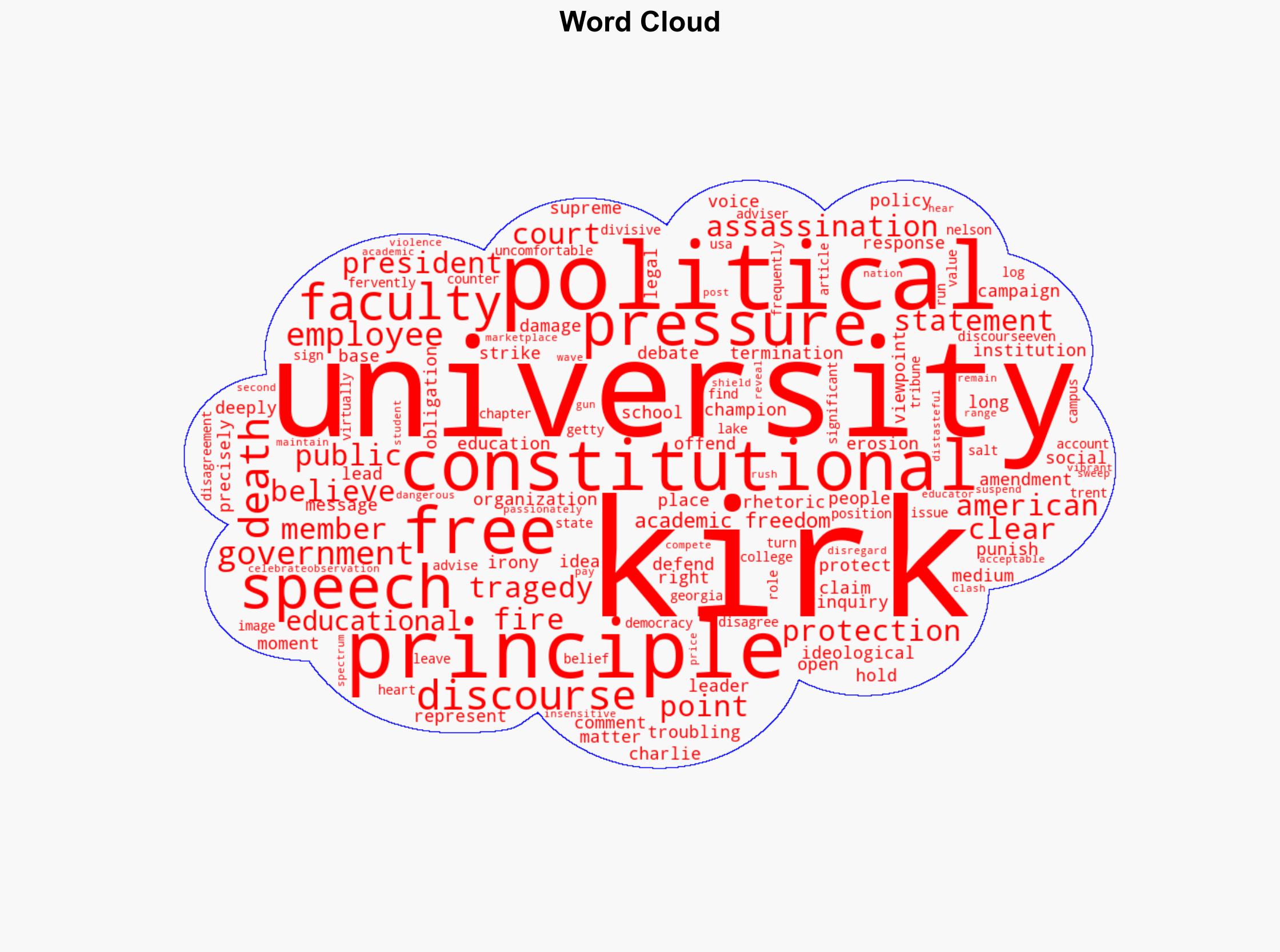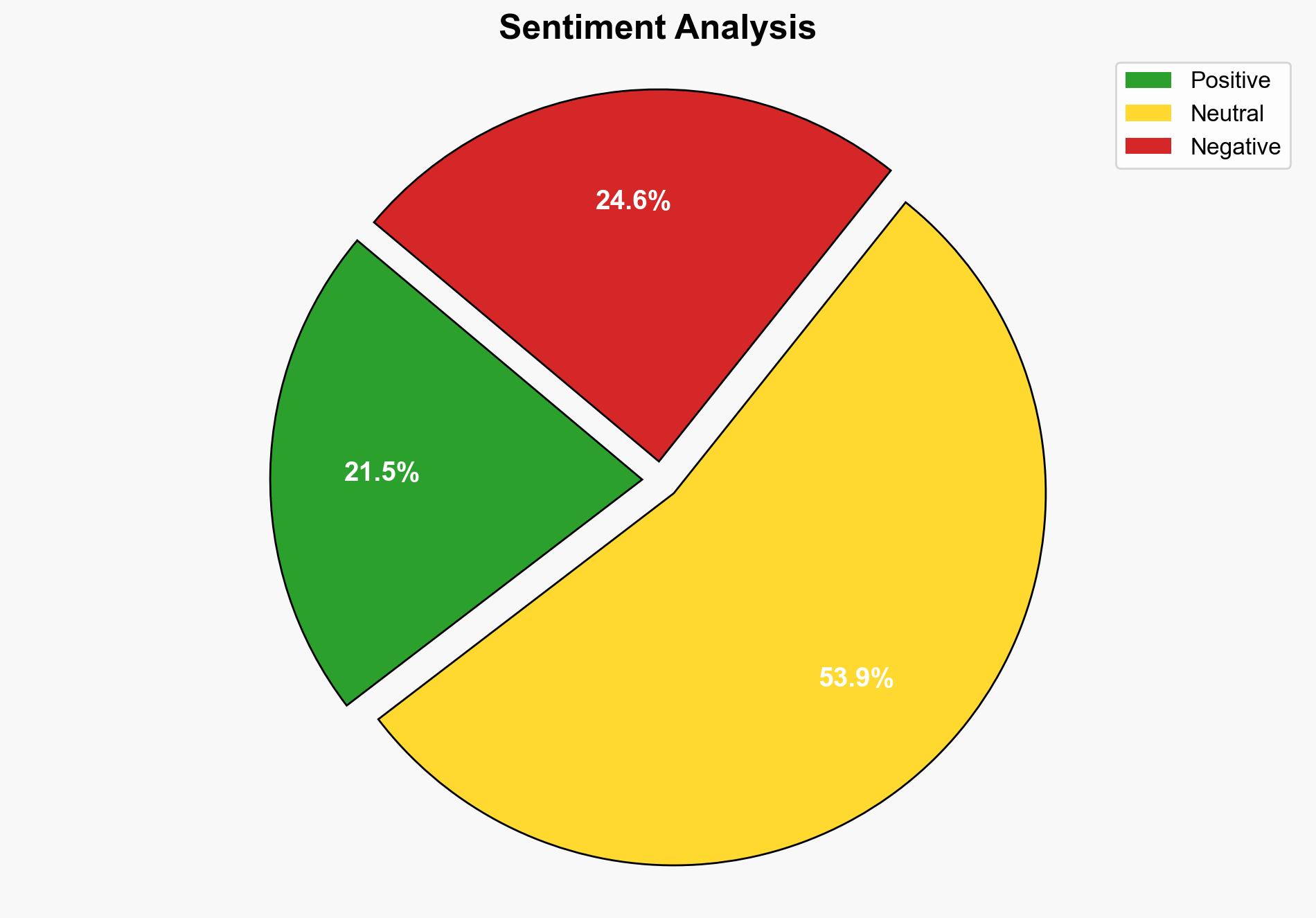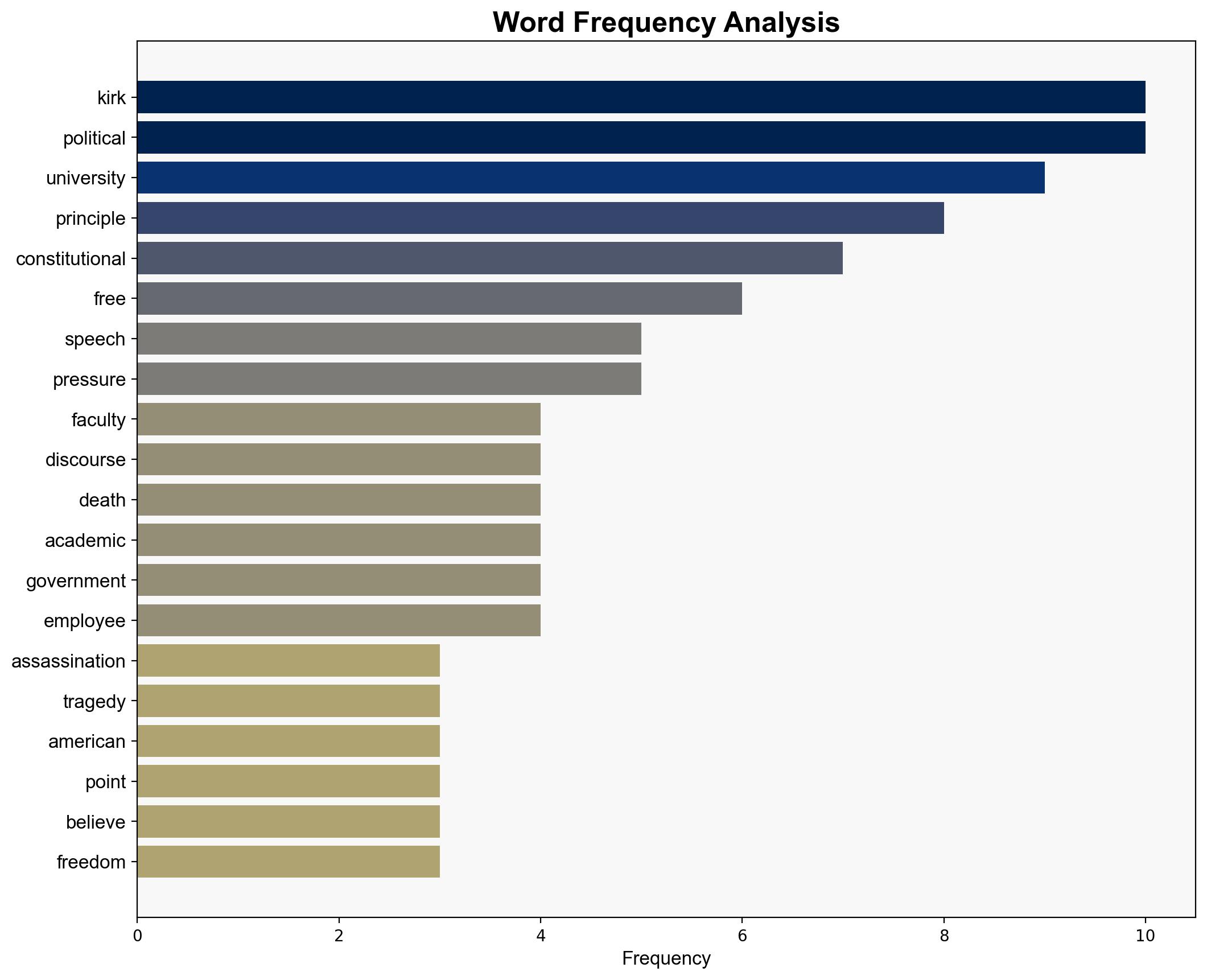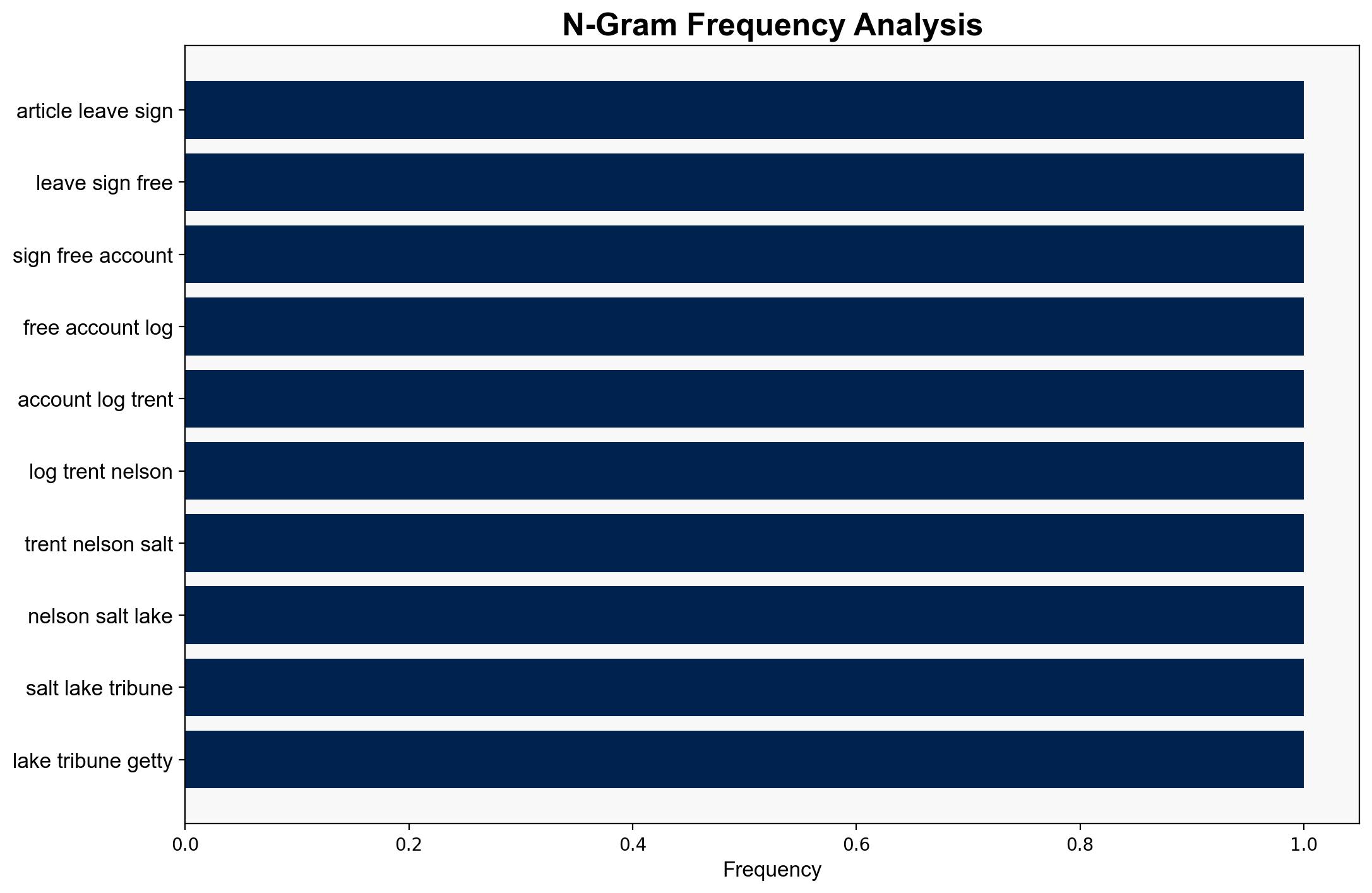In Defense of Distasteful Faculty Speech – Inside Higher Ed
Published on: 2025-09-29
Intelligence Report: In Defense of Distasteful Faculty Speech – Inside Higher Ed
1. BLUF (Bottom Line Up Front)
The most supported hypothesis is that the termination of faculty members for distasteful speech represents a significant threat to academic freedom and constitutional rights. This is based on legal precedents and the potential chilling effect on free speech within academic institutions. Confidence level: Moderate. Recommended action: Advocate for a balanced approach that protects free speech while addressing harmful rhetoric.
2. Competing Hypotheses
1. **Hypothesis A**: The termination of faculty members for distasteful speech is a necessary action to maintain social harmony and prevent the spread of harmful rhetoric.
2. **Hypothesis B**: The termination of faculty members for distasteful speech undermines academic freedom and violates constitutional protections, leading to a chilling effect on free discourse in universities.
Using the Analysis of Competing Hypotheses (ACH) 2.0, Hypothesis B is better supported due to historical legal precedents that protect even offensive speech under the First Amendment, particularly in academic settings.
3. Key Assumptions and Red Flags
– **Assumptions**:
– Hypothesis A assumes that distasteful speech directly correlates with social unrest and that its suppression is beneficial.
– Hypothesis B assumes that academic freedom is paramount and that legal protections will prevail in court.
– **Red Flags**:
– Potential cognitive bias in overestimating the impact of distasteful speech on societal harmony.
– Lack of data on the actual impact of such speech on campus environments.
– Inconsistent application of free speech protections across different cases and institutions.
4. Implications and Strategic Risks
– **Implications**:
– Erosion of academic freedom could lead to a homogenization of thought within universities, stifling innovation and critical discourse.
– Legal battles over faculty terminations could result in costly litigation and reputational damage to institutions.
– **Strategic Risks**:
– Escalation of political pressure on universities to conform to specific ideological stances.
– Potential for increased polarization within academic communities, leading to internal conflict and reduced collaboration.
5. Recommendations and Outlook
- Universities should establish clear guidelines that balance free speech with community standards, ensuring legal compliance and protecting academic freedom.
- Engage in dialogue with stakeholders to develop a consensus on acceptable speech standards.
- Scenario Projections:
- Best Case: Universities successfully navigate legal challenges, reinforcing academic freedom and setting a precedent for balanced speech policies.
- Worst Case: Widespread faculty terminations lead to significant legal and reputational costs, undermining the credibility of academic institutions.
- Most Likely: Ongoing legal disputes result in a gradual clarification of speech rights within academia, with mixed outcomes for institutions.
6. Key Individuals and Entities
– Charlie Kirk
– Georgia College & State University
– Supreme Court
7. Thematic Tags
academic freedom, constitutional rights, free speech, legal precedent, university policy




